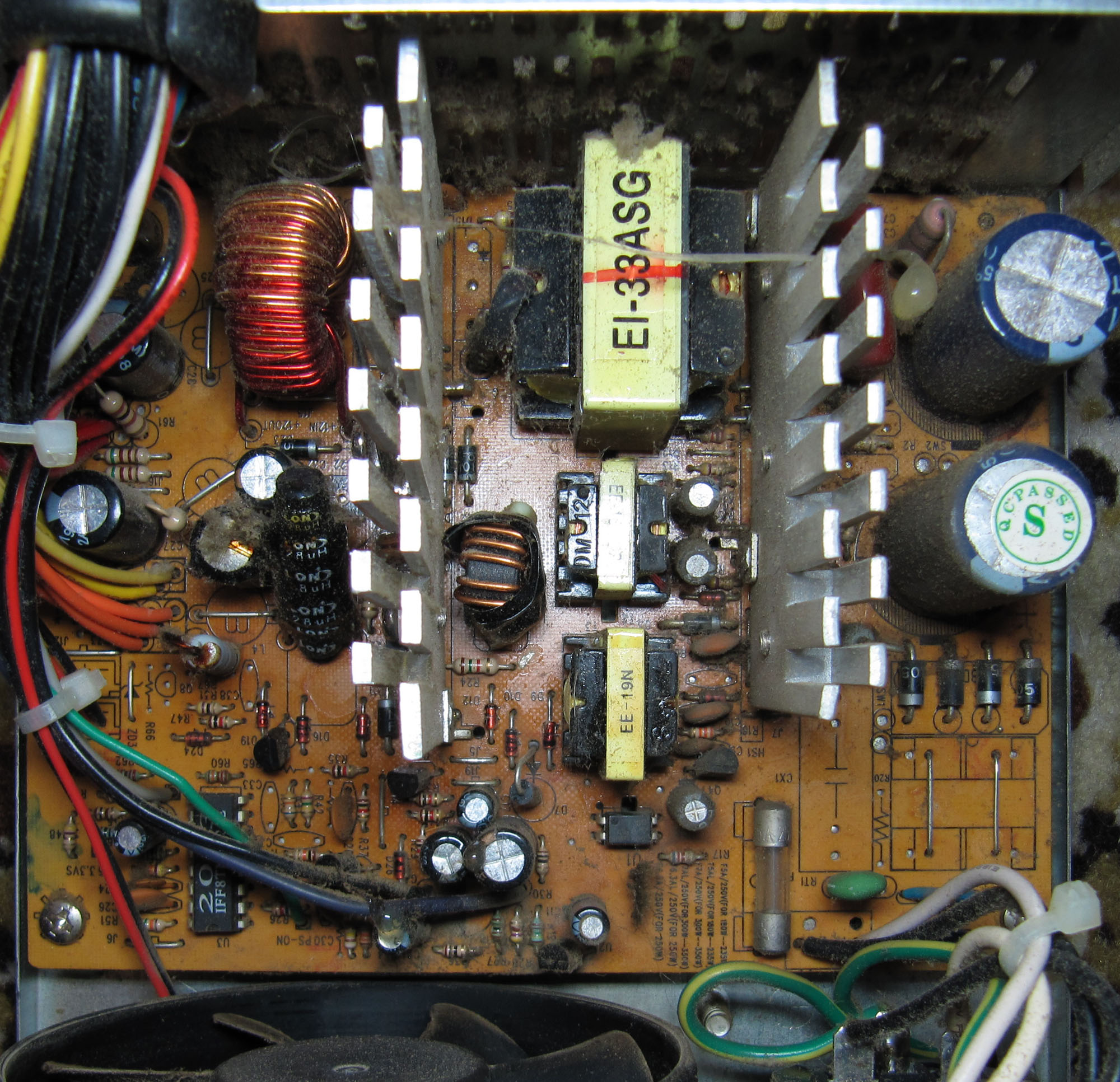Re: the gutless, bloated, and fried power supply hall of shame
Photo:
My friend has an old PC with quadcore intel and was working fine and being used by his son for online schooling.
Yesterday, it suddenly failed without warning, no power at all even manually shorting from the 24pins (green and black).
I checked and opened the PSU because there was no output at all. Surprised the fuse was still intact after tested it. Tested the primary diodes and all are good.
It has very similar lay-out of the PCB for this generic and cheap PSU and even using similar rectifier diodes and arrangement of other electronic parts.
I already confirmed the cheap PSU is the culprit because i tried another PSU and the PC works fine.
What could be the problem if fuse is still intact? Does it mean the primary winding is good and i should concentrate more on secondary? I want to learn how to fix this PSU and not because it is cheaply made but because i am seeking further knowledge.
I will try to open it up again tonight and see if i can find something on the board
Originally posted by ratdude747
View Post
Photo:
My friend has an old PC with quadcore intel and was working fine and being used by his son for online schooling.
Yesterday, it suddenly failed without warning, no power at all even manually shorting from the 24pins (green and black).
I checked and opened the PSU because there was no output at all. Surprised the fuse was still intact after tested it. Tested the primary diodes and all are good.
It has very similar lay-out of the PCB for this generic and cheap PSU and even using similar rectifier diodes and arrangement of other electronic parts.
I already confirmed the cheap PSU is the culprit because i tried another PSU and the PC works fine.
What could be the problem if fuse is still intact? Does it mean the primary winding is good and i should concentrate more on secondary? I want to learn how to fix this PSU and not because it is cheaply made but because i am seeking further knowledge.
I will try to open it up again tonight and see if i can find something on the board


 I find this to be highly unlikely, but not impossible after all. With a failed cap on the output, the output toroid will have nowhere to "dump" its energy, and that can also cause it to overheat.
I find this to be highly unlikely, but not impossible after all. With a failed cap on the output, the output toroid will have nowhere to "dump" its energy, and that can also cause it to overheat.
 ) to the point where you could feel it getting very hot. I wasn't checking on it often and did turn it sideways but it could have been like that for months if not a year. Then add the age, high CPU usage and the heatsink blocking the airflow, it makes sense.
) to the point where you could feel it getting very hot. I wasn't checking on it often and did turn it sideways but it could have been like that for months if not a year. Then add the age, high CPU usage and the heatsink blocking the airflow, it makes sense.
 ). The 5VSB/Aux switcher is a C5027S, in a typical 2 transistor setup. The main transformer is 34mm wide by 29mm tall, which seems a bit small to me.
). The 5VSB/Aux switcher is a C5027S, in a typical 2 transistor setup. The main transformer is 34mm wide by 29mm tall, which seems a bit small to me. Alright, I'll do normal input wiring to output side.
Alright, I'll do normal input wiring to output side. This "thing" has, what, 6-7 turns per side and with regular wire? - LAME!
This "thing" has, what, 6-7 turns per side and with regular wire? - LAME! Which -competent- PSU manufacturer DOES THIS? Seriously, it's like the "production house" literally grabbed whatever part they could find laying around. Actually, I wouldn't be surprised if these are recycled parts, given the mismatch. But hey, I'll give them credit - at least the capacitance is matched.
Which -competent- PSU manufacturer DOES THIS? Seriously, it's like the "production house" literally grabbed whatever part they could find laying around. Actually, I wouldn't be surprised if these are recycled parts, given the mismatch. But hey, I'll give them credit - at least the capacitance is matched. 


Comment